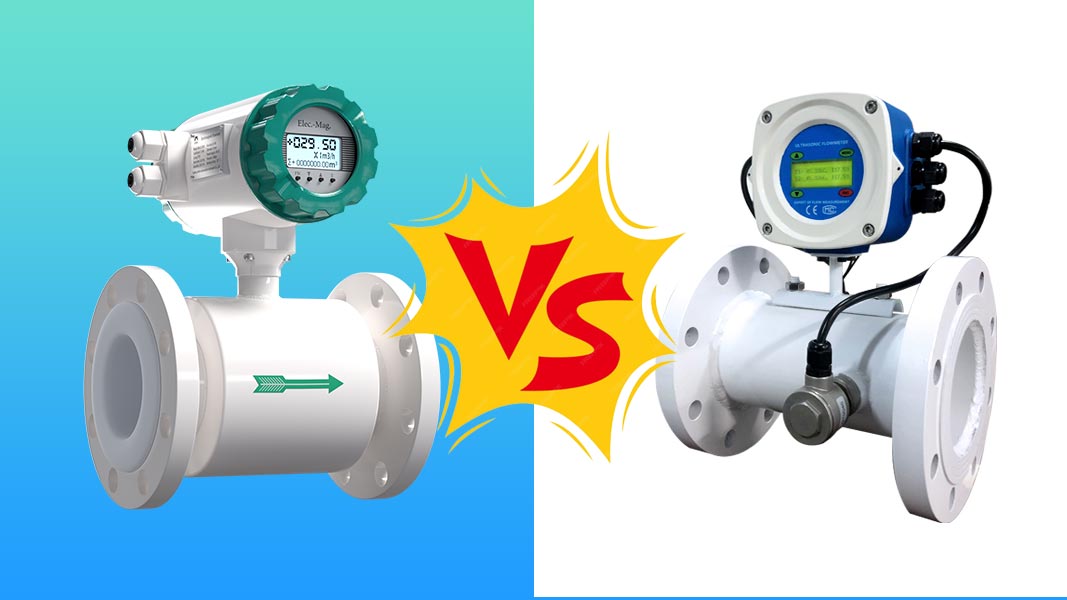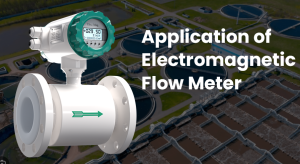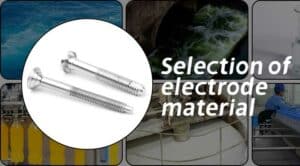
When it comes to precise, reliable flow measurement in industrial and municipal applications, two technologies dominate the conversation: ultrasonic flow meters and electromagnetic (magnetic or mag) flow meters. Both have unique advantages and ideal use cases, but understanding which one best fits your specific needs can make a big difference in performance, cost-efficiency, and long-term maintenance.
In this detailed guide, we’ll dive deep into a comparative analysis of ultrasonic and electromagnetic flow meters, exploring how they work, where they excel, their limitations, and which industries benefit most from each.
What Is an Ultrasonic Flow Meter?
An ultrasonic flow meter uses high-frequency sound waves to measure the velocity of a fluid. It does this without any moving parts or direct contact with the fluid (in the case of clamp-on types), which makes it a non-invasive and highly versatile option.
There are two main types:
-
Transit-time ultrasonic meters – These measure the difference in time it takes for ultrasonic pulses to travel with and against the flow direction.
-
Doppler ultrasonic meters – These measure the change in frequency (Doppler effect) of the sound waves reflected off particles or bubbles in the fluid.
What Is an Electromagnetic Flow Meter?
An electromagnetic flow meter, also known as a mag meter, works on Faraday’s Law of Electromagnetic Induction. It measures the voltage generated as a conductive fluid passes through a magnetic field. The greater the fluid velocity, the higher the voltage induced.
This type of flow meter is ideal for conductive liquids (with conductivity >5 µS/cm) like water, slurries, sewage, and chemicals.
Working Principle Comparison
Let’s break down the key differences in how each meter operates:
| Feature | Ultrasonic Flow Meter | Electromagnetic Flow Meter |
|---|---|---|
| Technology | Ultrasonic sound waves | Electromagnetic induction |
| Contact with Fluid | Can be non-contact (clamp-on) | Requires contact with conductive fluid |
| Measurement Type | Time difference or Doppler shift | Voltage induced by fluid velocity |
| Best For | Clean or dirty fluids (Doppler), portable installs | Conductive fluids like water, acids, and slurries |
Understanding how each works is crucial because it defines their application boundaries and installation requirements.
Accuracy and Performance
Both types offer high accuracy under the right conditions, but there are subtle differences:
-
Ultrasonic meters can reach ±0.5% to ±1% accuracy for transit-time types, while Doppler types are slightly less accurate due to signal scattering.
-
Mag meters generally deliver ±0.2% to ±0.5% accuracy, making them more consistent in measuring conductive, homogenous fluids.
However, accuracy can drop significantly if ultrasonic meters are used on fluids with excessive air bubbles or low flow velocities, or if mag meters are used on non-conductive fluids like hydrocarbons.
Installation Flexibility
Ultrasonic flow meters shine in this category, especially clamp-on versions, which offer:
-
Non-intrusive installation
-
No downtime during installation
-
Ideal for retrofit applications
On the other hand, electromagnetic flow meters typically require:
-
In-line installation
-
Some piping modifications
-
Ensuring full pipe condition and grounding
If minimal downtime and pipe modification are priorities, ultrasonic wins hands down.
Fluid Compatibility
One of the most crucial decision points between ultrasonic and electromagnetic flow meters is the type of fluid being measured:
Ultrasonic Flow Meters
-
Work with clean liquids (transit-time) and dirty or aerated liquids (Doppler)
-
Suitable for non-conductive fluids
-
Not ideal for very viscous or multiphase flows
Electromagnetic Flow Meters
-
Only work with conductive fluids
-
Ideal for water, slurry, wastewater, pulp, and chemical applications
-
Cannot measure gases or hydrocarbons
Maintenance and Durability
Ultrasonic meters, especially clamp-on types, have no moving parts and no direct contact with the process fluid, making them:
-
Low maintenance
-
Less prone to wear from corrosive fluids or abrasion
-
Ideal for applications where hygiene and contamination risks are a concern
Electromagnetic meters, while also having no moving parts, require:
-
Regular checks on electrode condition
-
Maintenance for lining integrity, especially in abrasive or corrosive service
In harsh environments, both meters perform well, but ultrasonic meters have the edge in maintenance simplicity.
Cost Considerations
When it comes to total cost of ownership, here’s how the two compare:
| Cost Factor | Ultrasonic Flow Meter | Electromagnetic Flow Meter |
|---|---|---|
| Initial Cost | Medium to High | Medium |
| Installation Cost | Low (for clamp-on) | Higher (due to pipe cutting and welding) |
| Maintenance Cost | Low | Moderate |
| Lifetime Cost | Competitive, especially for non-invasive types | Long-lasting but requires periodic service |
While mag meters are more affordable upfront, ultrasonic meters save money on installation and maintenance — especially in large-diameter or hard-to-access pipes.
Application Scenarios
Here are some real-world application examples to help clarify which technology works best:
Best Uses for Ultrasonic Flow Meters:
-
Water distribution systems
-
Building HVAC systems
-
Oil & gas pipelines
-
Temporary flow monitoring
-
Non-invasive sanitary processes
Best Uses for Electromagnetic Flow Meters:
-
Municipal water and wastewater
-
Chemical manufacturing
-
Pulp and paper industries
-
Mining slurry monitoring
-
Food and beverage processes (with hygienic liners)
Your industry and fluid type will often dictate the clear winner between the two.
Pros and Cons Summary
Ultrasonic Flow Meters
Pros:
-
Non-invasive (clamp-on)
-
Suitable for a wide range of fluids
-
Easy installation and low maintenance
-
Portable options available
Cons:
-
Accuracy affected by bubbles or poor pipe conditions
-
Requires full pipe for reliable readings
-
Doppler type depends on particles in fluid
Electromagnetic Flow Meters
Pros:
-
High accuracy and stability
-
Excellent for dirty or abrasive fluids
-
Long lifespan with proper maintenance
Cons:
-
Only works with conductive fluids
-
Requires in-line installation
-
Sensitive to grounding and electrical noise
How to Choose the Right Flow Meter
Ask yourself these key questions:
-
What type of fluid am I measuring?
-
Conductive = mag meter; Non-conductive = ultrasonic
-
-
Do I need a non-invasive solution?
-
Choose ultrasonic (clamp-on)
-
-
Is portability important?
-
Ultrasonic wins again
-
-
What accuracy level do I need?
-
Mag meters have a slight edge
-
-
Can I modify the pipeline?
-
If not, go for ultrasonic
-
Your decision should always balance technical requirements, budget, and long-term reliability.
Conclusion
In the battle of ultrasonic flow meter vs electromagnetic flow meter, there’s no universal winner — only the right tool for the job. If you’re working with non-conductive fluids, require quick installation, or need portability, ultrasonic flow meters are your go-to solution. However, if your application involves conductive, dirty, or corrosive fluids and you need high accuracy and stability, electromagnetic flow meters are the better fit.
By fully understanding the strengths and limitations of each technology, you can make a confident, informed decision that ensures optimal performance, accuracy, and cost-efficiency for your flow measurement needs.
We are a manufacturer of automatic flow meters with many years of experience in the industry. We have strong independent research and development capabilities and are a leader in the flow meter industry. Our main products include electromagnetic flow meters, vortex flow meters, turbine flow meters, ultrasonic flow meters, Coriolis flow meters, various solenoid valves, level meters, control units and valves, etc. Welcome to purchase –Best Instrument




